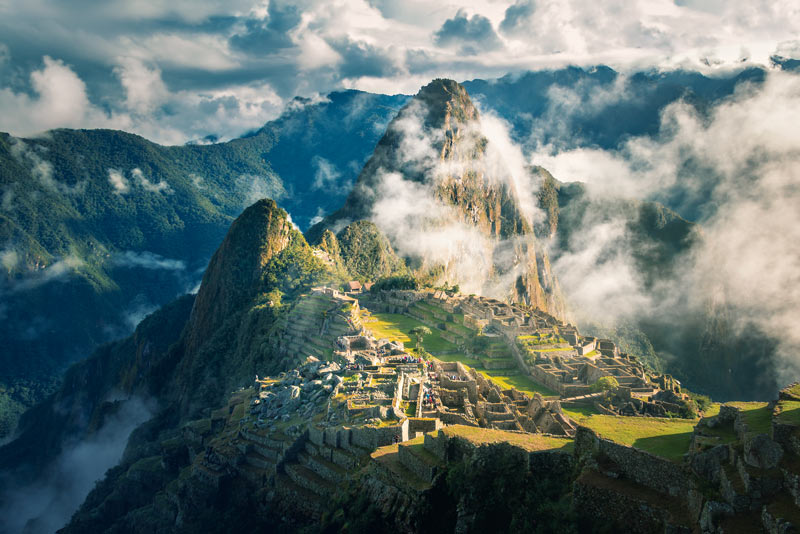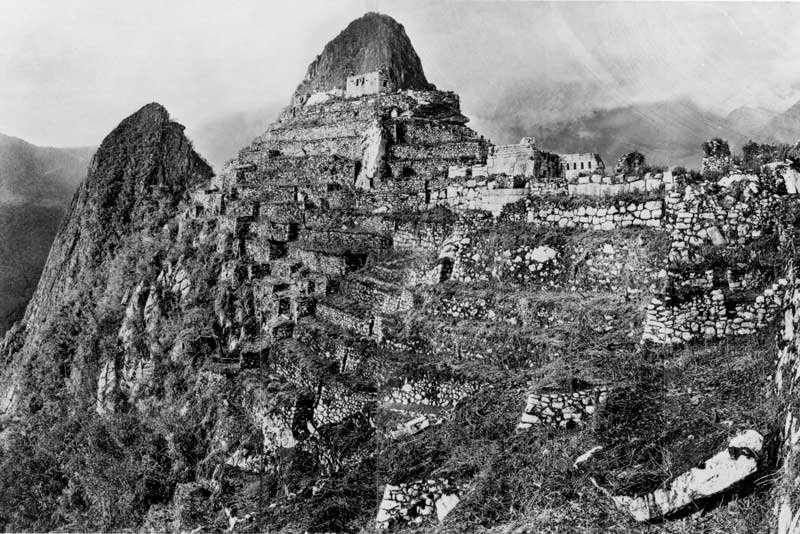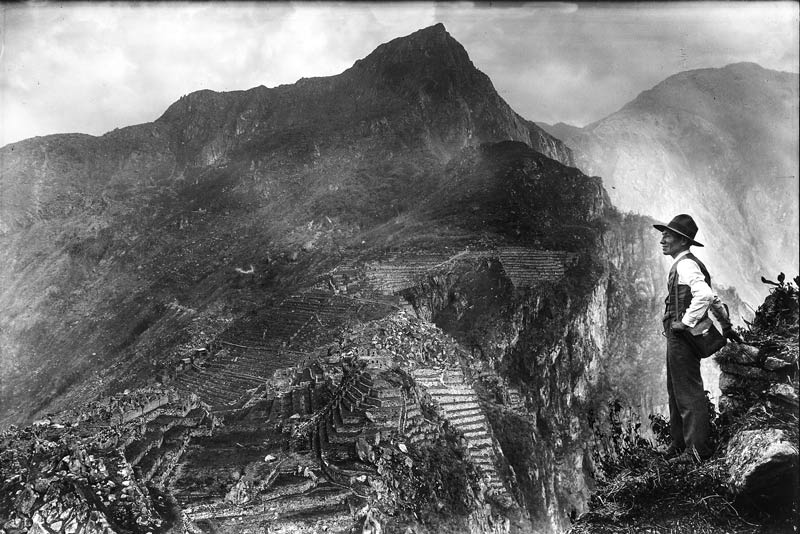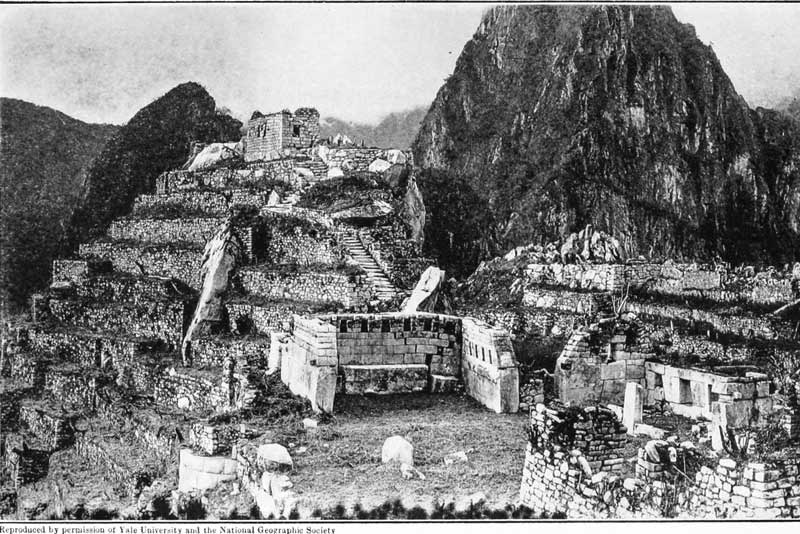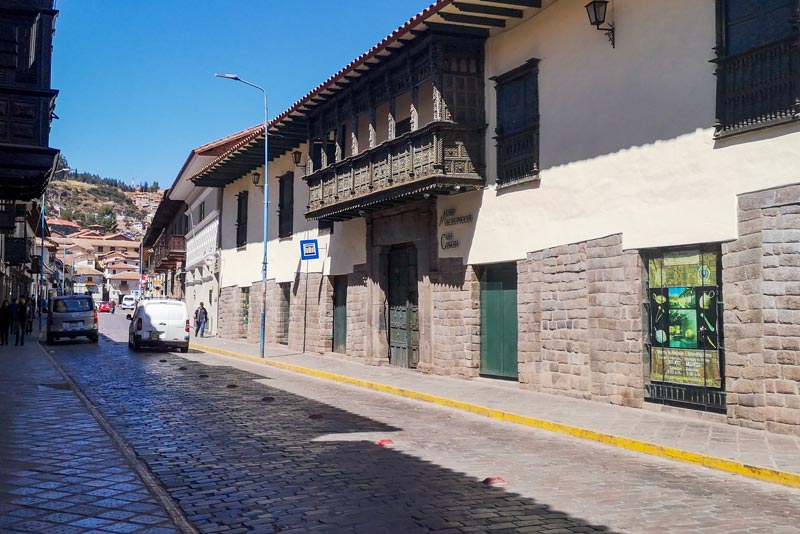Machu Picchu treasures returned to Peru
Machu Picchu was a city inhabited by nearly 1,000 people. In this sense, different activities developed. Among them, the large ceremonial plazas and Inca temples stood out. Various archaeological artifacts were found there, considered treasures due to their historical importance. These include handicrafts, gold jewelry-like decorations, weaving or wool-spinning tools, cooking utensils, food remains, burial spaces, and many other items common in any culture.
- Machu Picchu before its rediscovery
- Machu Picchu in 1911
- The first studies of Machu Picchu
- Artifacts taken to Yale University
- The return of Inca artifacts to Peru and Cusco
- Timeline of Machu Picchu and its discovered treasures
- Where can the artifacts returned by Yale University be found?
- Frequently Asked Questions
Machu Picchu before its rediscovery
Machu Picchu, the wonder of the world, is located in the Cusco Andes, surrounded by lush vegetation typical of the high jungle. Due to its remote location, it is believed that the Inca citadel was abandoned during the Spanish conquest and the conflicts that followed.
- What was Machu Picchu? It is believed that Machu Picchu was an urban center for some elites and also had strong religious and ceremonial significance.
- How many people lived in Machu Picchu? It is estimated that Machu Picchu was inhabited by between 300 and 1,000 people.
- In addition to being a religious and urban space, it was largely dedicated to agriculture.
- During its peak, the agricultural terraces were fully cultivated, and the finely carved stone temples were likely decorated with precious stones.
- Located at the top of the mountain, the only way to reach it was by following the Inca Trails or Qhapaq Ñan, which can still be visited today.
- One of the most important temples was the Temple of the Sun.
- Machu Picchu may have been a strategic urban center from which new conquests and expansions into the jungle were launched.
- Its construction dates back to before 1450 and was likely inhabited much earlier.
Machu Picchu in 1911
On July 24, 1911, Machu Picchu was rediscovered after a series of permits were granted the previous year. The expedition’s goal was to find Vilcabamba, the last Inca refuge. However, they arrived at another Inca citadel, whose precise existence was not recorded at the time.
An interesting detail for Hiram Bingham was that, while exploring the Inca city, he found an inscription that read, “Lizárraga 1902.” This indicated that some locals and others had already known about this site.
From 1911 onwards, Machu Picchu became a global sensation, attracting attention due to the news and subsequent research conducted. Unfortunately, it is estimated that Hiram Bingham illegally removed more than 46,332 archaeological artifacts, which were taken out of Peru under the pretense of being studied. However, only 300 pieces were eventually recovered.
Where can the artifacts found at Machu Picchu be seen today? Most of the pieces discovered by Hiram Bingham and his team are housed in various museums, including:
- The Machu Picchu Site Museum – Manuel Chávez Ballón, located in Machu Picchu Pueblo (Aguas Calientes).
- The Machu Picchu Museum Casa Concha, located in Cusco, near the Main Square.
- The British Museum in London.
- The Yale Peabody Museum, part of Yale University in the United States.
Hiram Bingham’s words upon arriving at Machu Picchu
“Suddenly, I found myself standing in front of the walls of a ruin and houses built with the finest Inca craftsmanship. The walls were hard to see as trees and moss had covered the stones for centuries. But in the shade of bamboo and climbing shrubs, the visible walls were made of white granite blocks cut with the highest precision. I found magnificent temples, royal houses, a large plaza, and thousands of homes. It felt like a dream.”
Hiram Bingham (July 24, 1911)
The First Studies of Machu Picchu
The studies conducted on Machu Picchu began after the arrival of Hiram Bingham. After making the news of its discovery known to the world, he started seeking support from various institutions. For the study of Machu Picchu, he received support from:
- The Peruvian government.
- Yale University.
- National Geographic.
- Support and funding from other entities.
Thanks to the support he obtained, Hiram Bingham carried out three expeditions to Machu Picchu, during which various tasks were undertaken between 1911 and 1915. Some of the most significant tasks included:
- Surveying the entire area and identifying the main Inca structures.
- Clearing the tall grass that was covering almost all the structures.
- An initial assessment of the Inca citadel of Machu Picchu, highlighting the division between the upper and lower sections.
- Hiram Bingham noted that he found two families living among the ruins of Machu Picchu.
- One of the first worldwide publications about Machu Picchu was written by Hiram Bingham for National Geographic magazine.
- Collection of artifacts following excavations at Machu Picchu.
- Discovery and excavation of a cemetery, where it was found that more female remains were present than male remains.
Artifacts Taken to Yale University
It is estimated that Hiram Bingham took more than 40,000 archaeological artifacts to the United States. This figure appears in records; however, it is important to clarify that many of these, or the vast majority, were fragments of a single piece.
- Most of the discovered artifacts were ceramic elements, made of clay and other minerals.
- There were also stone pieces with different shapes and carvings.
- Additionally, various gold and silver artifacts were found.
- Some organic artifacts were also discovered, including human and animal remains.
- Most artifacts were analyzed to determine their approximate age and other details, such as traces of food.
- The DNA of some human remains was analyzed, revealing that the majority of the population were women.
- Nearly 100 years later, the Peruvian government began requesting that Yale University prepare to return the Inca artifacts.
- Several years passed before Yale University finally returned all the artifacts.
- The best-preserved artifacts are on display at the Machu Picchu Museum – Casa Concha.
- The remaining artifacts are safeguarded by UNSAAC (San Antonio Abad National University of Cusco).
- Other artifacts were sent to the Machu Picchu Site Museum, where additional findings from the area are also exhibited.
The Return of Inca Artifacts to Peru and Cusco
During the government of Alejandro Toledo, formal requests were made to the Peabody Museum at Yale University. The request was clear; however, Yale University initially refused, leading to years of delay before the thousands of archaeological artifacts extracted from Machu Picchu during the excavations could be returned.
Unfortunately, the lack of regulation on the excavations conducted by Hiram Bingham allowed him to leave Peru with thousands of extracted artifacts, which passed through customs without control and were therefore considered “illegally taken.” This occurred in the second year after the discovery, in 1912. After nearly a century, in 2011, Yale University returned some of the artifacts found at Machu Picchu.
The remaining artifacts were returned to Peruvians after the Peruvian government filed a lawsuit in the Federal Court of Connecticut against Yale. In 2012, Yale officials returned 127 boxes containing the missing artifacts, which were transported back to Cusco aboard an aircraft of the Peruvian Air Force.
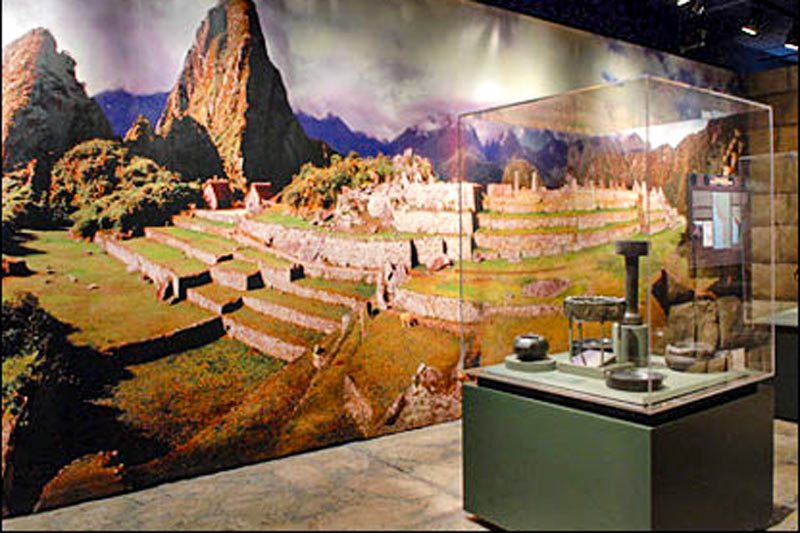
Artifacts returned from Yale University
Timeline of Machu Picchu and the Discovered Treasures
| Year | Event |
|---|---|
| 1911 | Machu Picchu was rediscovered, with Hiram Bingham as the main explorer. |
| 1912 – 1916 | Excavations and collection of findings began. Unfortunately, Hiram Bingham took almost everything he found with him. |
| 2003 | Peru initiated talks with Yale for the return of archaeological artifacts found throughout Machu Picchu. |
| 2008 | Yale University and the Peruvian government reached an agreement to return the artifacts discovered by Hiram Bingham. |
| 2011 | The first batch of treasures found in Machu Picchu arrived. This shipment included bones, ceramics, metal pieces, and more. |
| 2012 | The second batch of treasures from Machu Picchu arrived in Peru. Most artifacts are safeguarded by the National University of San Antonio Abad of Cusco (UNSAAC). |
| 2019 | The ties between Yale University and the Peruvian government were reaffirmed, working together on new studies about Machu Picchu. |
Who was Hiram Bingham?
Hiram Bingham III (1875-1956) was an American explorer and politician. Born in Honolulu, Hawaii, he was the son and grandson of Protestant missionaries. He is primarily known for rediscovering the Inca city of Machu Picchu in 1911. Bingham took numerous Inca artifacts to the United States, sparking controversies over their repatriation. In addition to his archaeological career, Bingham served as governor of Connecticut and a U.S. senator. His discovery of Machu Picchu brought him fame, though his legacy remains marked by disputes over the appropriation of cultural artifacts.
Where Can the Artifacts Returned by Yale University Be Found?
The artifacts were relocated to an old mansion adapted for displaying the pieces returned by Yale, known as “Casa Concha.” Its exhibition is based on the collection of artifacts excavated from Machu Picchu by Hiram Bingham in 1912. The Casa Concha Museum is a must-visit in Cusco if you are traveling to Machu Picchu. However, we understand that you are not coming from the other side of the world just to see the museum that houses artifacts from Machu Picchu, but to see Machu Picchu itself. For this, you should book your Machu Picchu tickets in advance.
The Casa Concha Museum
On June 22, 2011, Casa Concha received 17 boxes containing the first batch of artifacts excavated from Machu Picchu, arriving from the United States—specifically from Yale University’s Peabody Museum.
The Museum Exhibition
The Casa Concha Museum houses 366 exhibit-worthy artifacts displayed in 16 rooms. The exhibition is designed to be educational, following a logical sequence—from photographs of the scientific exploration to artifacts discovered during the latest restorations after the two earthquakes that struck Cusco. Some rooms also serve as an interactive video library, where visitors can acquire additional information about Machu Picchu and Inca culture. Visitors can observe:
- 366 exhibit-worthy artifacts
- 15 educational pieces
- 1,001 fragments, including the skeleton of a man (aged between 23 and 25), which was part of the first shipment.
Entrance Fees
- Foreign visitors: S/ 20.00
- Peruvian nationals: S/ 10.00
- Foreign students: S/ 10.00
- Peruvian students: S/ 5.00
Opening Hours
- Monday to Friday: 08:00 AM to 04:00 PM
Residents of Cusco can enter for free by presenting their national ID (DNI) or, in the case of foreign residents, their immigration card. This museum is not included in the Cusco Tourist Ticket; however, purchasing the ticket is necessary to visit other historical sites in the city.
Frequently Asked Questions
1) What types of Inca artifacts have been found in Machu Picchu?
The main artifacts found in Machu Picchu include ceramics and similar objects. Gold and silver items with different purposes were also discovered. Other notable objects include wooden and metal tools that were likely used in daily life.
2) What is the historical significance of these artifacts?
Each artifact highlights the cultural and even traditional significance of the inhabitants of Machu Picchu. Life in Machu Picchu was likely very different from Cusco, but the discovery and study of these artifacts provide valuable insights into their way of life.
3) How have the Inca artifacts found in Machu Picchu been preserved?
The artifacts found in Machu Picchu were stored to ensure their protection. Most of these artifacts were kept at Yale University before being returned to Peru to become part of the country’s cultural heritage.
4) What challenges were faced in the process of returning these artifacts to Peru?
The main challenge was bureaucratic hurdles. Initially, Yale University did not agree to Peru’s request. However, after persuasion from students and academic groups, the university eventually agreed to return the artifacts.
5) Which institutions were involved in the repatriation of the Inca artifacts?
Primarily, the Peruvian government and Yale University. Over the years, Peruvian cultural agencies and Cusco’s own university, the National University of San Antonio Abad of Cusco, played a role in providing facilities and spaces to conserve and display the returned artifacts.
6) How did the international community react to the return of these artifacts?
There was a significant public reaction to Yale University’s initial refusal. However, once the artifacts were returned, the main focus shifted to making them accessible to the general public. Fortunately, the Casa Concha Museum was established for this purpose.
7) What impact does the repatriation of these artifacts have on Peruvian culture?
The impact was overwhelmingly positive. It allowed for a deeper understanding of Inca culture and provided insights into how the Incas lived in this specific geographical area.
Advice from people who have been there
 By: Marcela A.
By: Marcela A.“Very interesting“
“It is one of the best experiences you can have if you visit Machu Picchu. You can find a lot of detailed information, which you may not be told by the Machu Picchu tour guides, and you can see pictures of what it was like before it was unearthed. Very very very interesting.“
By Ticket Machu Picchu – Last updated, March 4, 2025
